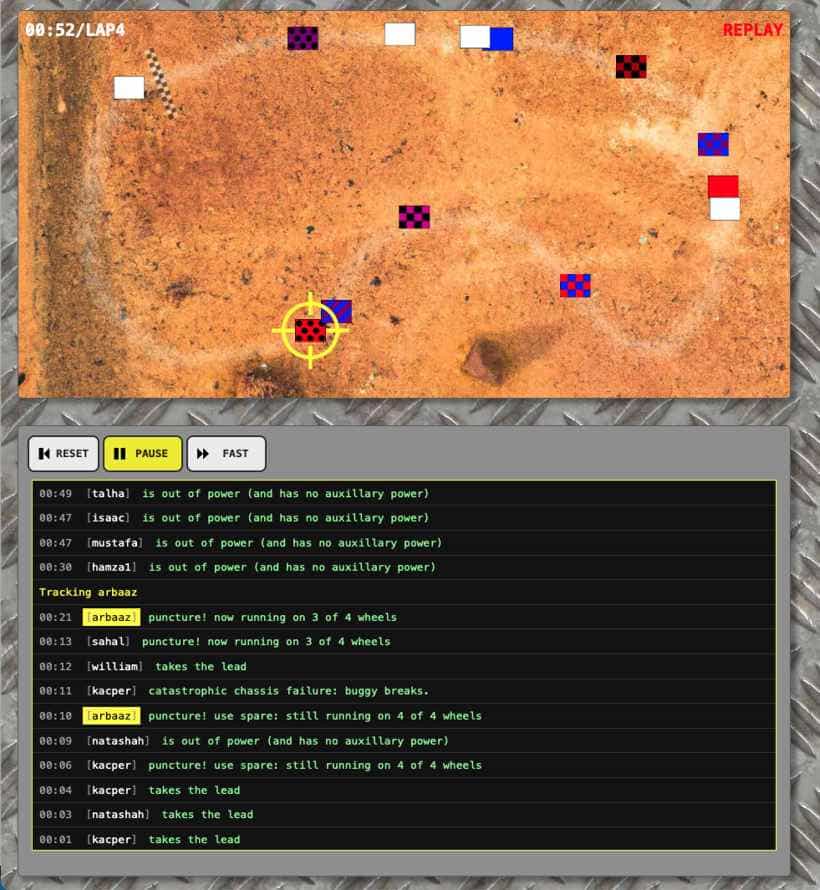About races
Although this is the Buggy Racing project, really the students’ focus is on their buggy editors — the web app each student develops in order to create and customise the specification for a racing buggy.
It is feasible to run this project without running any races, although that’s not ideal.
In fact, for the first few years we ran this project without running any races. This wasn’t entirely planned — it was a consequence of Covid and other work priorities — but it accidentally confirmed that the project can be run, and be the context for students’ work, even without the races. However, obviously everything makes more sense if there are also races being run.

The race player replaying a race.
What the races show
It’s important to remember that the objective of the project is not to win races. Although that’s a laudable goal, the focus from a software development point of view is to provide a context, and an incentive, for the improving the buggy editor. After all, the students start with a working editor: the incentive for the project should be to make it better.
For this reason we discourage you running races too close to the start of the project. Be careful not to accidentally discourage students who don’t get up to speed quickly enough.
It’s a deliberate feature of the design of the project that the software that determines the outcome of races can (and does) run separately from the race server. That is, we encourage you to customise or write your own. We think there is case for making the outcomes of the races clearly random enough that winning is more a cause of delight than an testament of engineering brilliance. In that respect, we ran our races more like a card game than a physics simulation.
Total cost and race rule violations
The results of the race are the first time a student sees confirmation of the race server’s calculation of their buggy’s cost, and — if their buggy did not qualify for the race — the rule violations that disqualified them.
We don’t publish this information before the race has been run, because it encourages the students to trust their own programs. In fact, the race server calculates the total cost of every buggy whenever it is stored in the database. But we don’t show this information except when it is listing in race results.
The race rules (and, specifically, the violations that are used to justify why a buggy has been disqualified from a race) are not listed explicitly — that is, they are not tabulated. Instead they are embedded in the specs page which students can and should interpret for themselves.
- Next: Creating a race